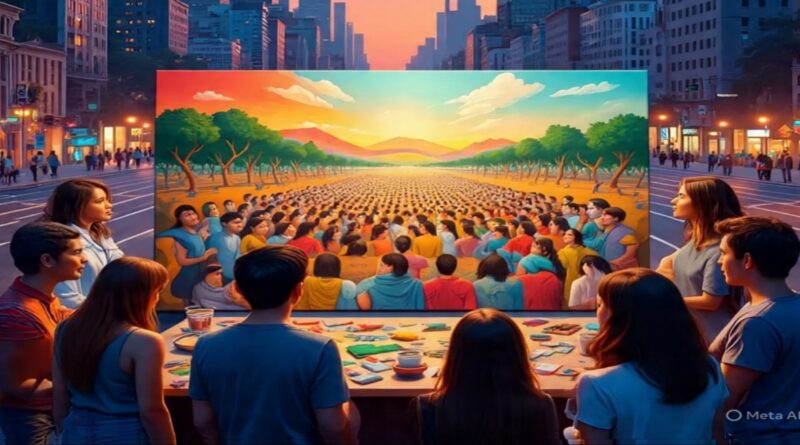How Art Reflects Society and Change
Art has always been more than just colors on a canvas or melodies in the air it’s a mirror of who we are. How art reflects society and change is one of the most fascinating ways to understand human evolution, emotions, and collective identity. From ancient cave drawings to digital NFTs, every piece of art tells a story about its time, its people, and their struggles, hopes, and dreams. Art is not only a product of culture it’s also a force that shapes and transforms it.
The Historical Perspective: How Art Reflects Society and Change Over Time
If we look back through history, we can see how art reflects society and change in every era. In ancient civilizations like Egypt, Greece, and Rome, art glorified gods, rulers, and myths, symbolizing power and spirituality. The Renaissance, on the other hand, shifted the focus toward humanism and science celebrating the beauty of human potential.
During the Industrial Revolution, art started to capture the challenges of urbanization and the changing face of human labor. Movements like Realism and Impressionism began highlighting the everyday lives of people instead of just the elite. Artists like Gustave Courbet and Claude Monet painted ordinary scenes that reflected social transformation and emotional depth.
Every brushstroke became a silent document of change proof that art evolves as society evolves.
Cultural Identity: How Art Reflects Society and Change Within Communities.
Art is deeply tied to culture. It represents language, traditions, and shared values. When we talk about how art reflects society and change, we also talk about how it preserves cultural memory while adapting to new realities.
Indigenous art, for instance, keeps ancestral stories alive even in the modern world. African tribal masks, Aboriginal dot paintings, and Native American totems all carry cultural symbols that survive colonization and modernization. These artworks show resilience the ability of communities to keep their roots strong while adapting to global influences.
Similarly, in Pakistan, calligraphy and miniature painting continue to evolve with digital media, showing how traditional art can blend with modern forms to express identity in new ways.
Emotional Mirror: How Art Reflects Society and Change in Human Feelings.
Beyond politics and culture, how art reflects society and change also applies to human emotion. Art captures how people feel in certain times. When the world experiences joy, art becomes bright and hopeful. During crises wars, pandemics, or economic struggles art often turns dark, symbolic, and introspective.
For example, during the COVID-19 pandemic, many artists shared their isolation and anxiety through digital exhibitions and online performances. The rise of virtual art galleries showed that even when the world stops, human creativity doesn’t. These emotional reflections help societies heal and connect on a deeper level
Technology and Innovation: How Art Reflects Society and Change in the Digital Age.
In today’s fast-paced world, technology is transforming art like never before. Digital tools, AI-generated imagery, and NFTs (non-fungible tokens) are revolutionizing how artists create, share, and sell their work. This is another proof of how art reflects society and change it adapts to the tools and platforms that define each era.
Social media has also democratized art. Anyone can share their vision with the world instantly. Platforms like Instagram, TikTok, and Pinterest have turned artists into influencers and storytellers, while audiences engage directly in creative dialogue. Technology doesn’t replace art; it expands its possibilities.
Social Justice: How Art Reflects Society and Change in the Fight for Equality.
Art continues to be a voice for the voiceless. It brings attention to social issues like climate change, gender equality, racial justice, and poverty. When we explore how art reflects society and change, we see how visual culture challenges stereotypes and encourages empathy.
Murals against racism, photography highlighting refugees, or eco-art installations made from recycled materials all remind us that art isn’t just decoration. It’s a conversation starter, a call to action, and a bridge between awareness and transformation.
Globalization: How Art Reflects Society and Change Across Borders.
In our interconnected world, art travels faster than ever. Artists draw inspiration from multiple cultures, creating hybrid styles that represent global unity. This diversity shows how art reflects society and change beyond national boundaries.
From K-pop aesthetics influencing Western music videos to Pakistani digital artists collaborating with brands in Europe, creativity no longer belongs to one region. Globalization allows artists to share local stories with a worldwide audience, promoting understanding and collaboration across borders.
Education and Awareness: How Art Reflects Society and Change in Young Minds.
Art is also shaping how new generations think and learn. Schools, museums, and online platforms use art to teach empathy, history, and critical thinking. By studying how art reflects society and change, young people learn that creativity can be a tool for problem-solving and positive action.
Art education encourages imagination a skill vital in the modern economy and in shaping the leaders of tomorrow.
Conclusion: How Art Reflects Society and Change The Power of Expression
In the end, art is the heart of humanity. It records our triumphs and tragedies, dreams and fears, unity and division. Understanding how art reflects society and change helps us see that creativity is not a luxury it’s a necessity.
Art tells us where we’ve been, where we are, and where we’re going. Whether through a song, a sculpture, or a digital design, every artist contributes to the great story of human evolution. Society shapes art, and art, in return, shapes society endlessly, beautifully, and powerfully.
Call to Action:
🎨 Explore more stories about art, culture, and creativity on our blog. Let’s keep discovering how art reflects society and change together!



